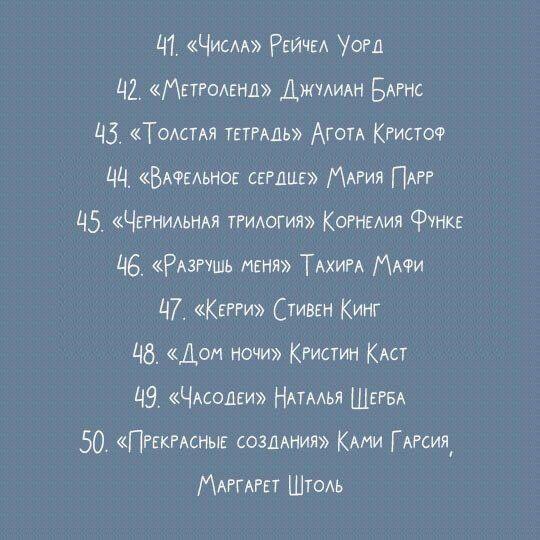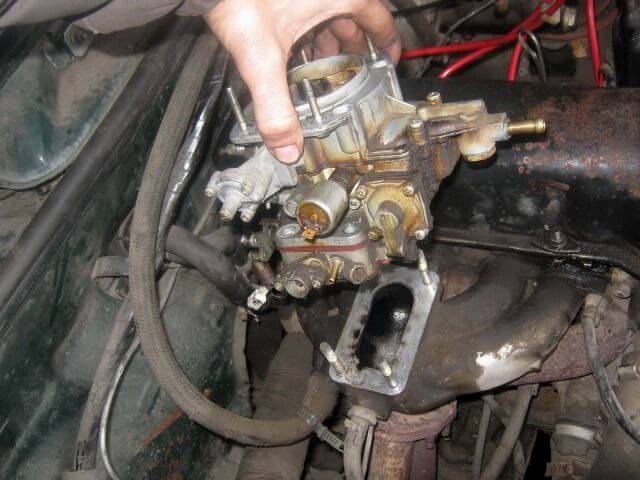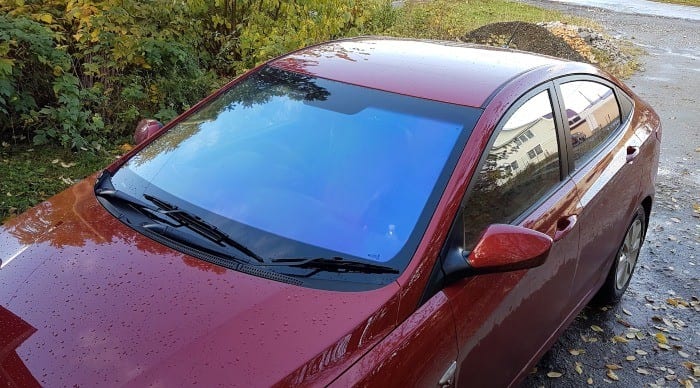
Athermal tinting: what is it, the pros, cons, legality
Content
- What is athermal film
- Why is athermal tinting necessary and what is its feature?
- What are the types of athermal films?
- Is athermal tinting allowed or not
- Athermal film manufacturers and tint price levels
- Glass tinting stages with athermal film
- Advantages and disadvantages of athermal films
- Video: is it worth gluing athermal tinting?
- Questions and answers:
To increase the comfort in the car, many motorists use various types of tinting. Most professional car tuning companies use athermal film. Some cars already come off the assembly line with slightly darkened windows.
We will figure out what is the peculiarity of this type of tinting, what are its advantages and disadvantages, and also how to use it.
What is athermal film
Athermal (sometimes just thermal) film is a type of tint coating used in automobiles. It consists of several layers that perform a separate function:
- base (polyester), on which additional layers are applied;
- adhesive layer with UV protection - allows you to stick the film on the glass;
- decorative layer (can be transparent or with a tint) with ultraviolet absorption;
- metallized layer for absorbing infrared rays (protection from solar heat);
- a protective layer that prevents the formation of small scratches.
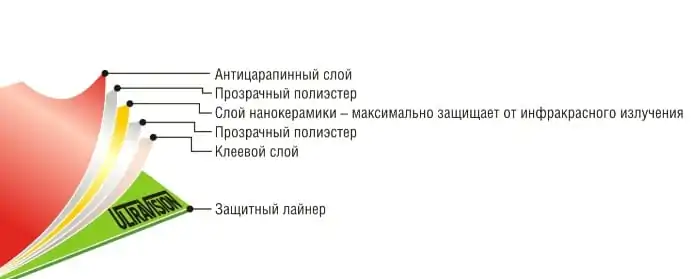
Thanks to the availability of several shades, each car owner will be able to choose the right thermal film for his car. The color scheme also has a coloring "Chameleon", which is very popular.
Why is athermal tinting necessary and what is its feature?
Cars are tinted for two reasons:
- to prevent the heating of the elements of the car interior by the sun during the hot summer;
- give the car an aesthetic appearance.
Athermal tinting performs another important function - it protects against the aggressive effects of ultraviolet radiation. Unlike ordinary dark film, this type of finishing material works slightly differently.
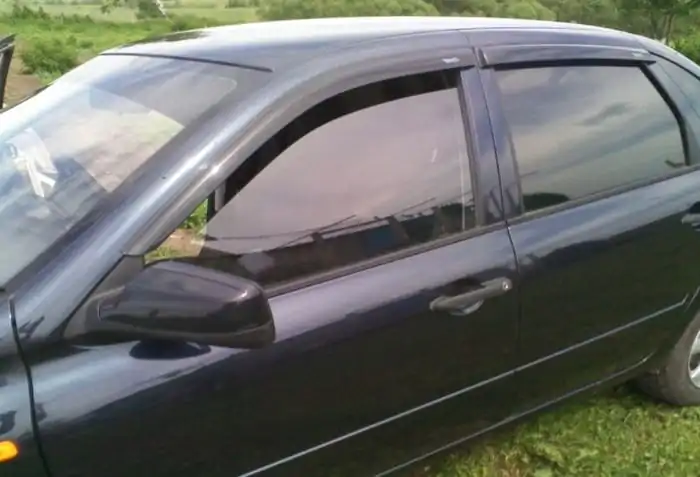
Conventional tinting is a film on which a special composition is applied, which prevents sunlight from penetrating through the glued surface of the glass. Athermal film on the contrary - does not block the access of light to the interior of the car, but neither objects nor passengers are exposed to infrared (thermal) and ultraviolet waves.
Glass pasted over with this material will retain ultraviolet radiation by 99%, thermal radiation by 55%, while the light transmission will be about 75% (such data are indicated in the product catalogs of different manufacturers). Thanks to such indicators, athermal film is several steps higher than conventional tinting.
What are the types of athermal films?
Choosing material for tinting the windows of their car, many motorists are faced with a large price range of material. This is due not to the coloring of the film, but to the method of its manufacture.
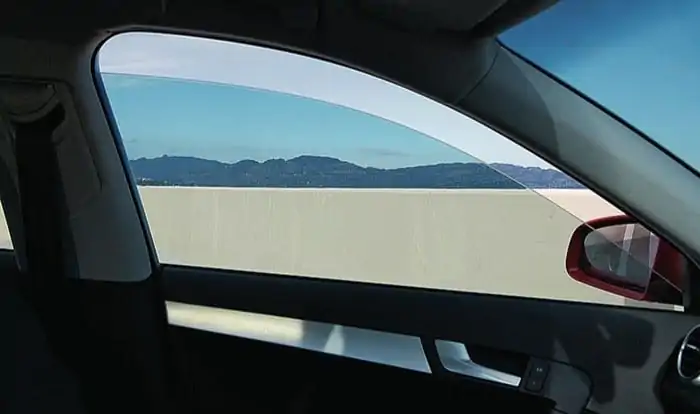
There are 4 types of athermalca. Each of them is created using a separate technology, and has its own properties.
- Metallized film. In this kind of tinting material, the UV protection layer is made of a metal polymer. Each manufacturer uses its own spraying technology. Some are applied to the outer layer of polyester, while others are applied to the inside. One of the drawbacks of this kind of material is interference for mobile communications and other equipment, the operation of which depends on receiving signals from outside (for example, a navigator), but it copes with the function of filtering solar radiation perfectly. This tinting is characterized by a mirror effect.
- Painted film. This is the same polyester film with several layers. Some of them have a certain shade, and the rest prevent color fading. The main advantage of this material is the budget cost and a large palette of colors.
- Spatter films. This is a kind of metallized analogs, only the metal layer in them is much thinner. The polyester is sprayed with various metals (spatter technology). This layer is much thinner than the base itself, so it is practically invisible. This material practically does not darken the room.
- Spatter-metallized film. The material combines the characteristics of both tinting options. This type is the most expensive, but it effectively protects against harmful solar radiation and does not wear out so quickly.
Is athermal tinting allowed or not
The main parameter on which the motorist should be guided, choosing tinting, is light transmission. According to GOST, this parameter should not be less than 75% (windshield, and a minimum light transmission of 70% is allowed for the front side windows). Especially on this figure you need to pay attention when the car owner chooses the material for gluing on the windshield.
On the packaging of each modification of the thermal film, the manufacturer indicates the percentage of light transmission. However, it often happens that this figure differs from the performance of the measuring device (several percent less).
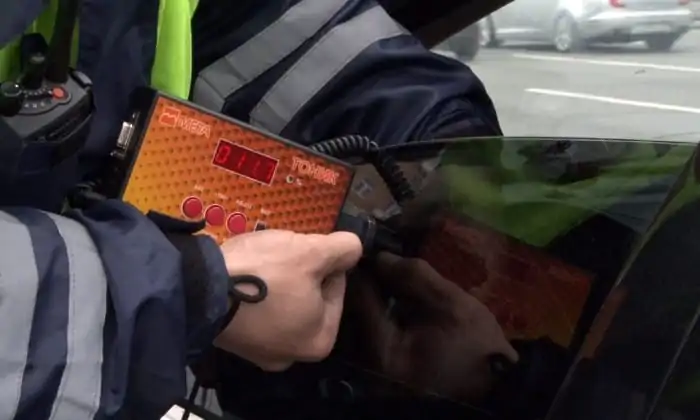
This discrepancy is explained by the fact that the manufacturer indicates the light transmission of the film itself, on not already glued glass. Most new glasses transmit light no more than 90 percent. That is, 10% of sunlight is no longer transmitted. If you stick a film with a parameter of 75% on such glass, then in fact 65% of the light will get into the cabin through such glass. It turns out that in order to paste on the windshield and front side windows, it is necessary to choose a film that has 85 percent light transmission.
In the case of used cars, the picture is more sad. For several years of operation, the light transmission of the windshield is reduced by approximately 10%. In this case, the owner of the car needs to look for a film with a parameter of more than 85%, but such films have not yet been created.
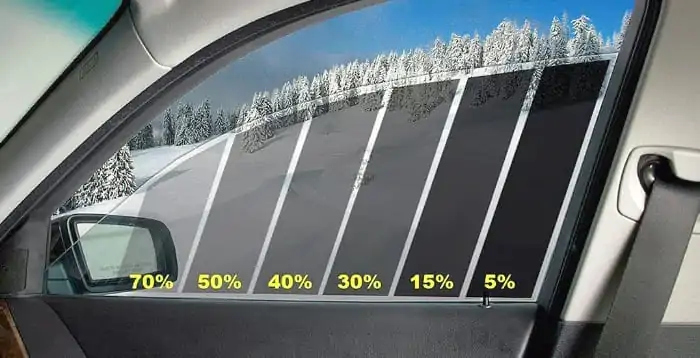
In view of this subtlety of the question, before buying tinting, it is necessary to conduct real measurements of the throughput of the glasses themselves.
It is also worth considering that under the law, such tinting should not distort the driver's perception of yellow, green, red, white and blue colors. These are safety issues, so it’s extremely important for the driver to consider these factors.
Athermal film manufacturers and tint price levels
Among all manufacturers of tinting material, two categories are popular:
- American manufacturer. Materials for athermal tinting have high light transmission and wear resistance. The cost of such a film is also high. Among such companies, Ultra Vision, LLumar, Mistique Clima Comfort (chameleon film), Sun Tec have established themselves.
- Korean manufacturer. Such a film is characterized by more affordable prices, but it often happens that the parameters indicated on the package do not correspond to the real ones (light transmission can be several percent lower than declared). Most often, motorists opt for the South Korean company NexFil and the Korean company Armolan.
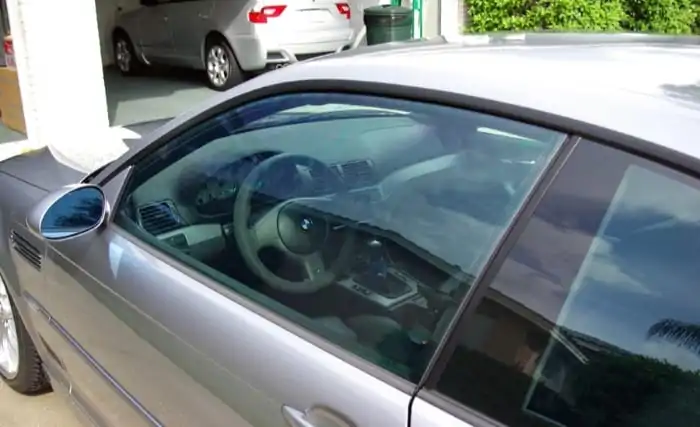
Most often, athermal film is sold in large rolls, which is more beneficial for a professional car tinting studio. For fans who have the necessary skills to perform this procedure, manufacturers have provided small packages in which the cut length of the film is 1-1,5 meters and the width is mainly 50 cm. Usually this size is enough for pasting the front side windows. The cost of such a cut is about $ 25.
If there is no experience in gluing tinting, it is better to entrust the work to professionals. This will avoid unpleasant consequences in the form of air bubbles between the film and glass.
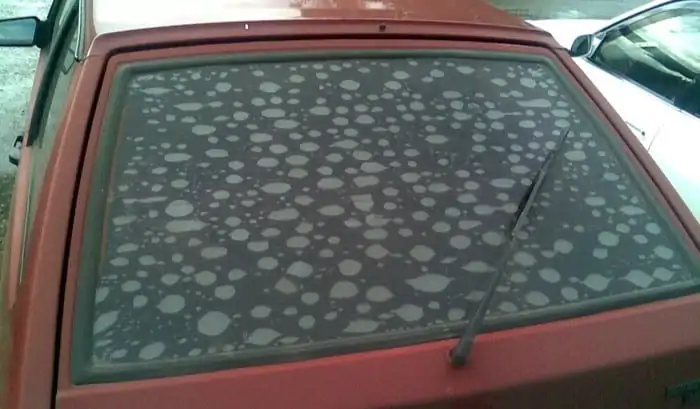
Each service station takes its cost for this procedure.
| Glass pasting: | Average cost for a passenger car, cu (with material) | The average cost for an SUV or minivan, cu (with material) |
| Windshield | 34 | 40 |
| Front side | 20 | 27 |
| All glass | 110 | 160 |
Glass tinting stages with athermal film
The process of gluing glass with an athermal film is quite complicated, but it can be done independently. For this procedure you will need:
- detergent (liquid soap, shampoo, etc.);
- rakil - soft spatula;
- "Bulldozer" - a soft spatula with a long handle;
- building hair dryer;
- special knife for trimming the film;
- clean rags.
It is important to perform tinting with an athermal film in the following sequence (for example, pasting a windshield).
- Outside, the windshield is thoroughly washed with clean water and any soap (for example, you can use baby shampoo).
- The film is laid out on wet glass (with the substrate facing up). If the roll is large, then it can be laid out so that the rolled-up part lies on the roof of the car.
- Rough cutting is done - the cut should be slightly larger than the glass itself.
- The next step is film forming. To do this, you need a building hair dryer. You need to be careful so that the hot air does not spoil the film, as well as the glass. You can not use spot heating, but distribute the temperature with sweeping movements.
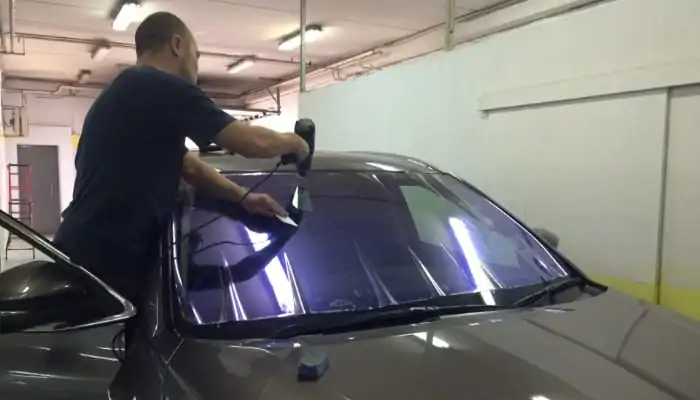
- During the heating of the film, moisture evaporates quickly, so you need to moisten it abundantly on both sides.
- Forming a film is not an easy process, so at first the central part warms up. During the procedure, it is stretched from the center to the edges. In the middle, the film will fit snugly against the glass, and arrows will form above and below due to the uneven distribution of the canvas.
- You will need a racquil to gently smooth out the resulting arrows. During the work, you need to continue to warm the film. Creases should not be allowed. To do this, large arrows are divided into several small ones.
- After the film is evenly stretched, it is cut off along the edge of the perforation on the glass (the dark part near the rubber bands). To do this, use a special knife for the film (you can use clerical, the main thing is not to scratch the glass).
- Next, the inner part of the windshield is prepared. All elements that may interfere with sticking tint are removed.
- The inner part of the frontal “shaves” - with a spatula, all small particles that are not washed with water are removed. Then the surface is washed thoroughly and wetted abundantly with soapy water. To prevent water from damaging the electrical part of the car, the dashboard is pre-covered with thick rags that absorb moisture well.
- So that dust does not get on the glue base, water is sprayed over the machine. After the substrate is removed. As it detaches, the adhesive layer is abundantly wetted with water.
- The film is placed on the prepared surface of the glass inside the cabin, and all the water is expelled with a rubber spatula (movement from the center to the edges). In places where the hand does not reach, the film is smoothed using a “bulldozer”. If it doesn’t stick well at the edges, the rakal turns into a napkin (this will protect it from scratches), after which it is possible to press the heat film tightly onto them.
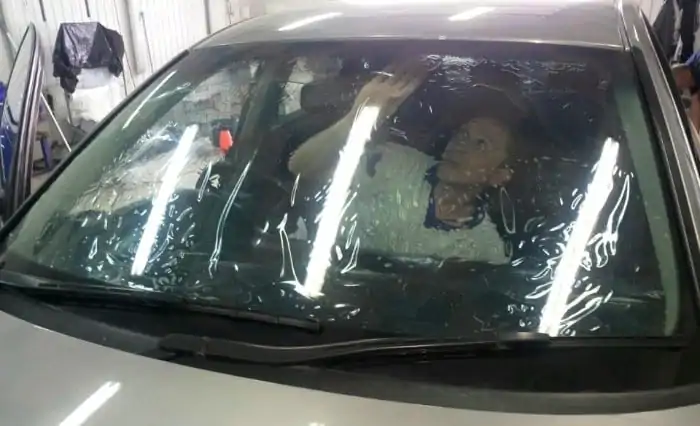
- Drying time of athermal tinting - up to 10 days. During this period, it is undesirable to raise and lower the side windows (if they were pasted over), as well as wash the car.
Advantages and disadvantages of athermal films
When the car is standing in the sun for a long time, the surface temperature of the interior elements can become so hot that prolonged contact with the skin can cause burns (especially if it is a metal part).
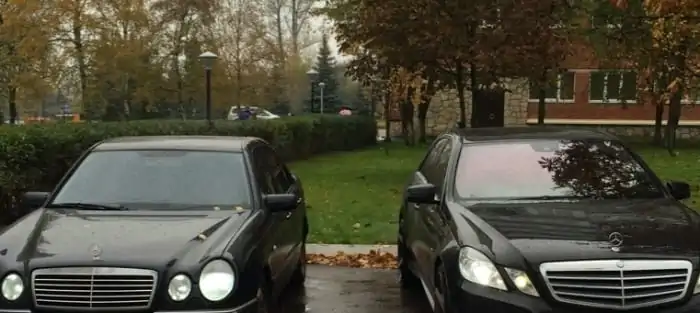
To prevent excessive heating of plastic and leather products, as well as to provide greater comfort, tinting has been developed. Let's consider some advantages of an athermal film in comparison with a usual analog.
UV protection
Everyone knows that the car’s interior is not heated due to sunlight, but because of infrared radiation. Ultraviolet light also negatively affects human skin. The peculiarity of athermal protection is that it serves as a barrier to invisible radiation.

Such tinting will be especially useful for cars with a leather interior. Natural or artificial material quickly deteriorates from excessive heat - its elasticity is lost, due to which it can crack.
Upholstery from textile materials under the influence of direct sunlight burns out faster, which will negatively affect the aesthetics of the cabin. And plastic elements from excessive heat begin to deform over time. Because of this, squeaks may appear in the cabin.
Passenger comfort
Another plus of athermal tinting is that passengers in such a car will be more comfortable. In bright weather, due to a slight dimming of the windows, the eyes are not so tired.

With a long trip, burns from prolonged exposure to sunlight will not appear on the skin. If the car was parked in an open parking lot, the leather seats will not heat up to such an extent that it will be impossible to sit on them.
Lower fuel costs
Since the interior of the car does not heat up so much, the driver does not need to frequently translate car climate system to maximum mode. This will save a little on fuel.
Convenience of driving
When the side and rear windows are pasted over with dark tinting, this creates certain inconveniences in driving. For example, when parking in reverse, the driver may not notice the obstacle and crash into it. Because of this, he often has to either open his door and peer out of the car, or lower the window.

On the other hand, if there is no tinting in the car, the driver’s eyes can get very tired in bright weather due to the fact that he squinted all the way.
Windshield protection
During the operation of the car, there are frequent cases when, due to the carelessness of the driver or front passenger, the inside of the glass may be scratched. The tinting material serves as a small protection against such damage (it is cheaper to replace the film, not the glass itself). If thermal film is pasted on the windshield, it will protect the driver and passenger from flying fragments during an accident.
In addition to the advantages, this tinting has its drawbacks. And they are not few:
- the cost of a high-quality film is quite high;
- due to the complexity of the glass gluing procedure, you need to use the services of professionals, and this is also waste;
- over time, the glass fades anyway, and tinting has to be changed;
- some product categories (especially those that have a blue tint) increase eye fatigue in sunny weather;
- in the case of metallized films, the operation of equipment such as a navigator and a radar detector is sometimes difficult;
- the characteristic shade of the windshield can attract the attention of a police officer who has the appropriate permission to measure the transmittance of car windows;
- in sunny weather, the dashboard can be reflected on the windshield (especially if the panel is light), which will greatly interfere with the ride;
- a car with a high mileage may not meet the standards for tinting due to the dullness of native windows.
Video: is it worth gluing athermal tinting?
As you can see, athermal tinting has many advantages, but at the same time, every motorist must take into account that any interference with factory settings can lead to unpleasant consequences.
If you want to stick this material on the windshield, you should be especially careful, since often such glass (tinted) does not pass according to state standards of light transmission.
In addition, we suggest watching a video about whether to use athermal tinting film in your car or not:
Questions and answers:
Can I tint with athermal film? There is no specific ban on the use of athermal tinting. The main condition that must be met is that glass must transmit at least 70% of the light.
What is athermal film tinting? This is the same tint film, only it does not transmit ultraviolet (filters up to 99%) and infrared (filters up to 55%) rays into the car interior.
What are the types of athermal films? There is a metallized, colored, spatter, spatter-metallized type of athermal films. The Chameleon film is very popular.
